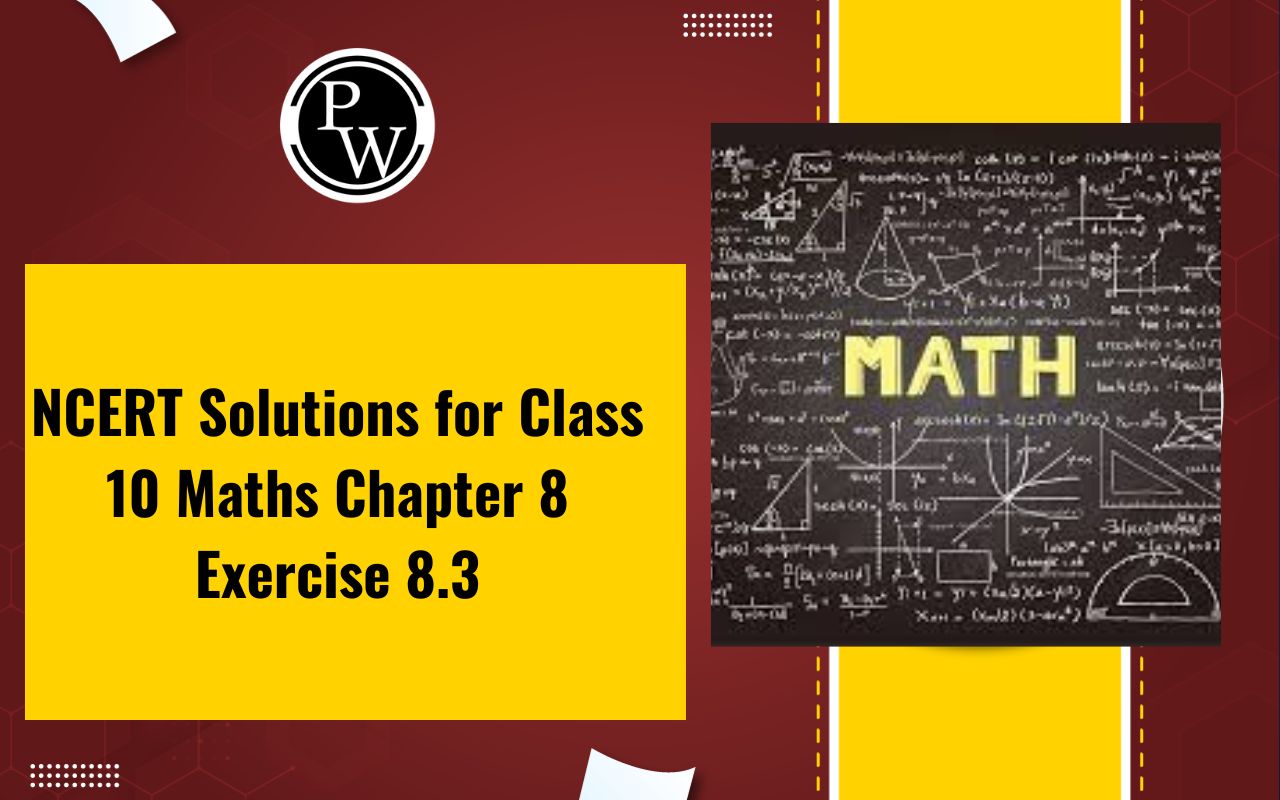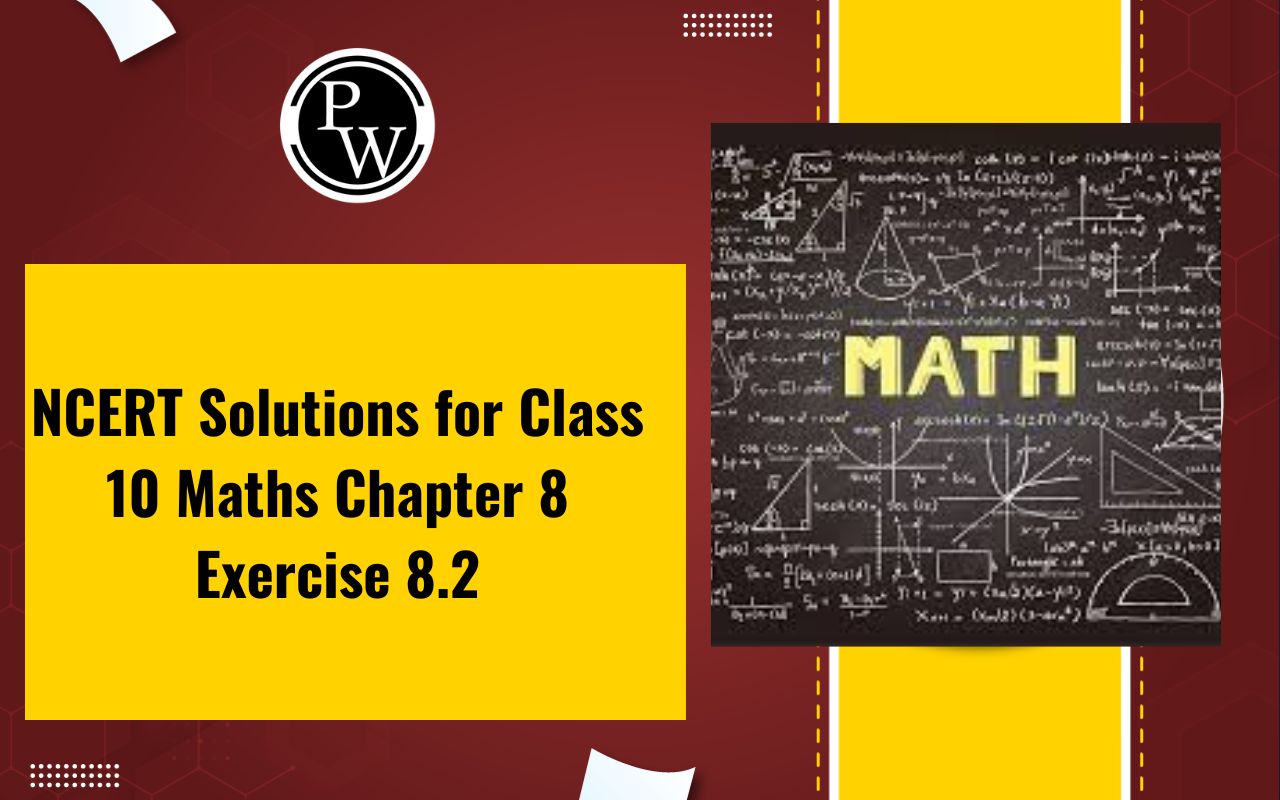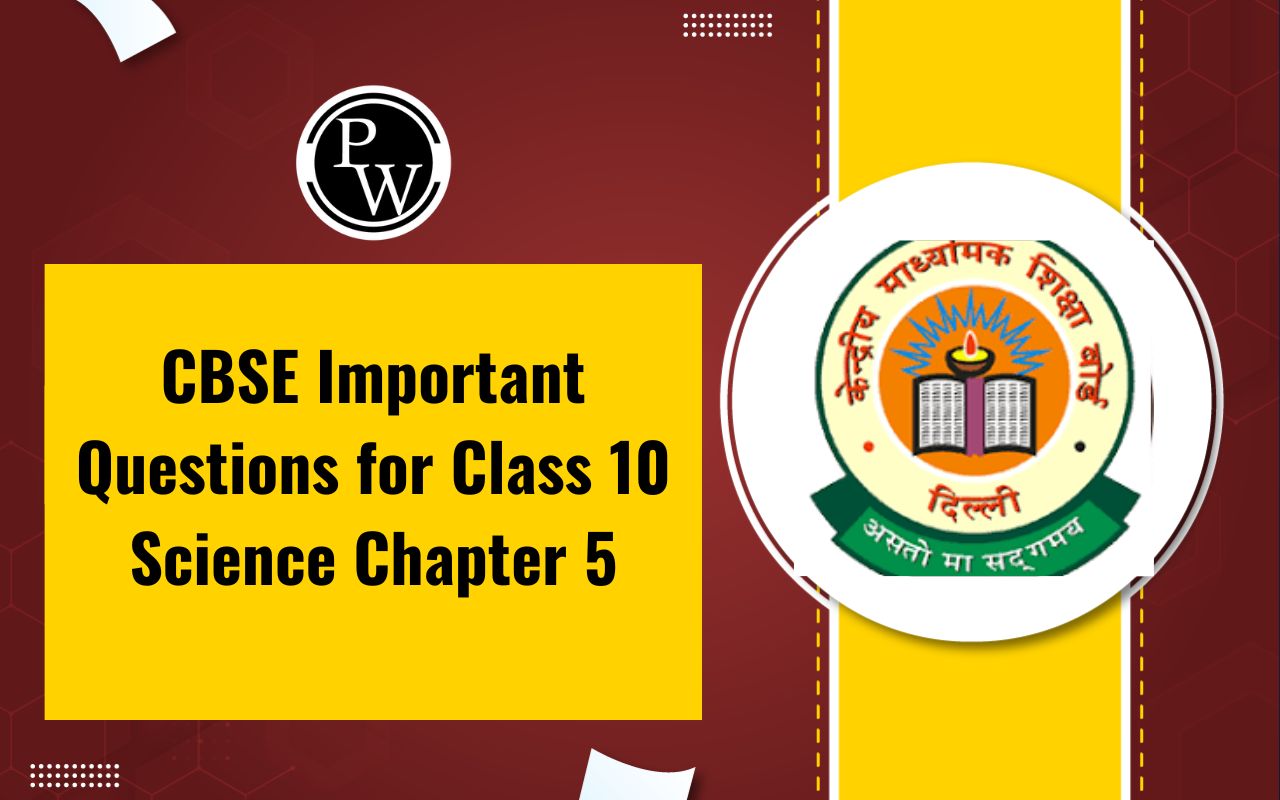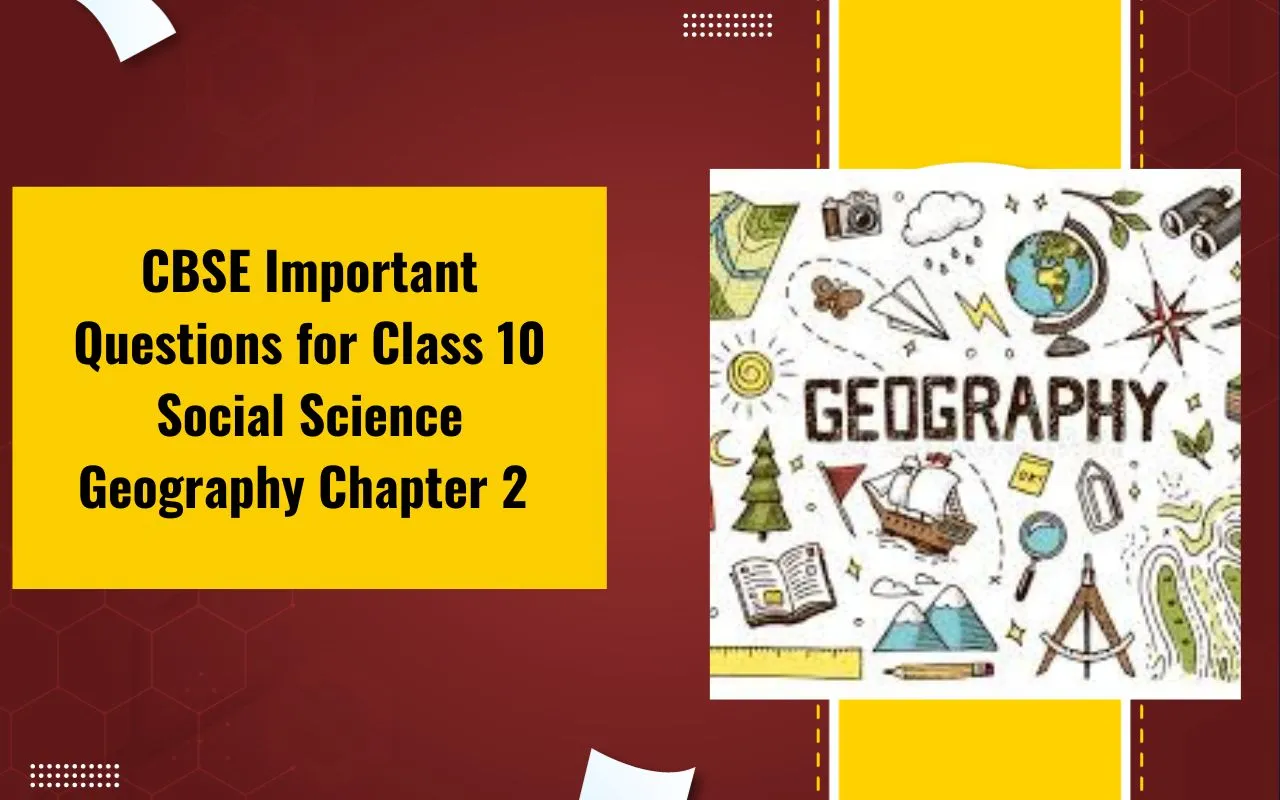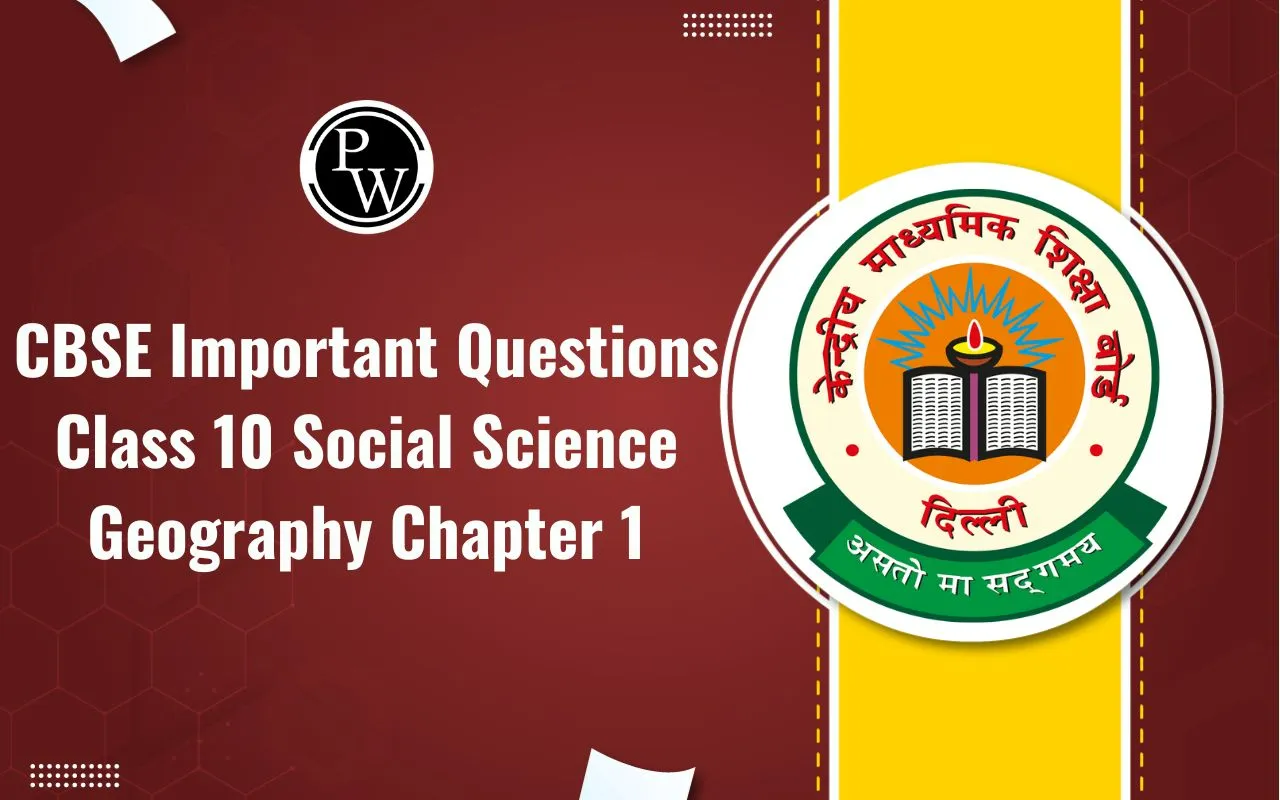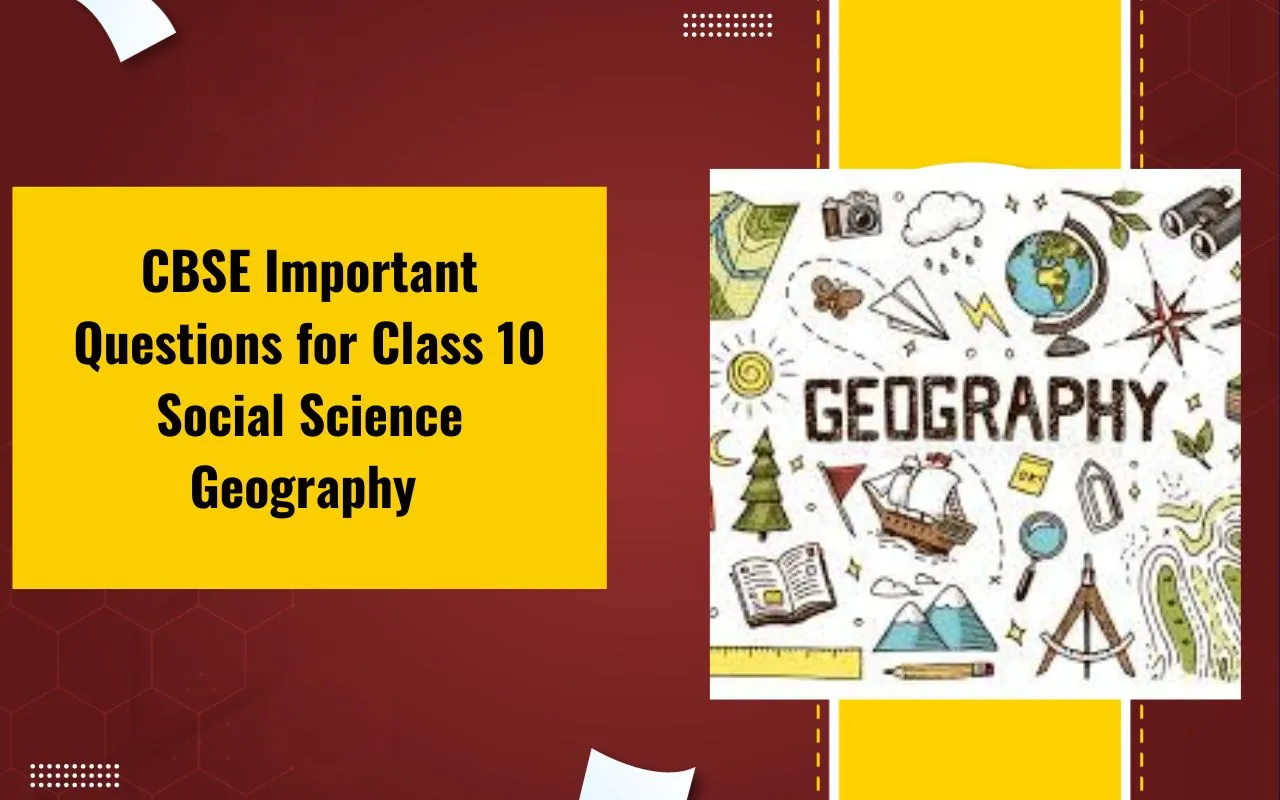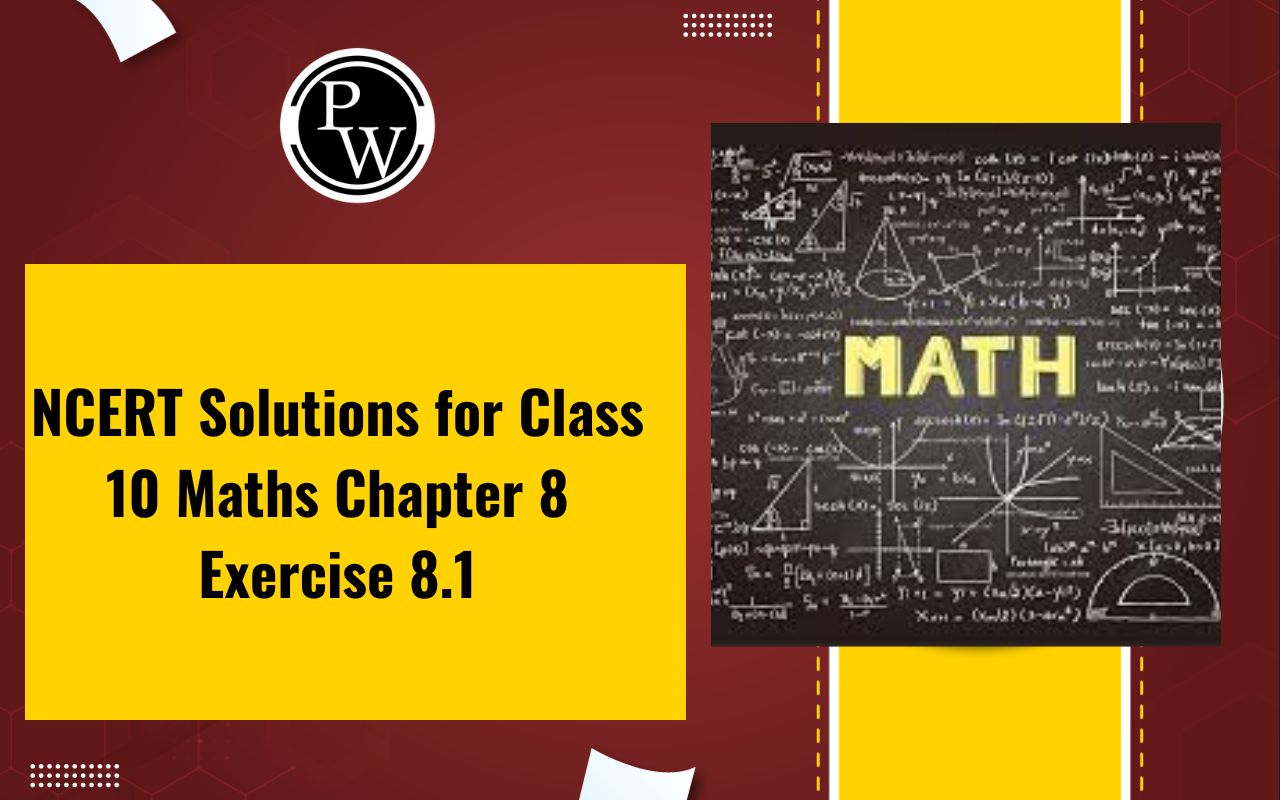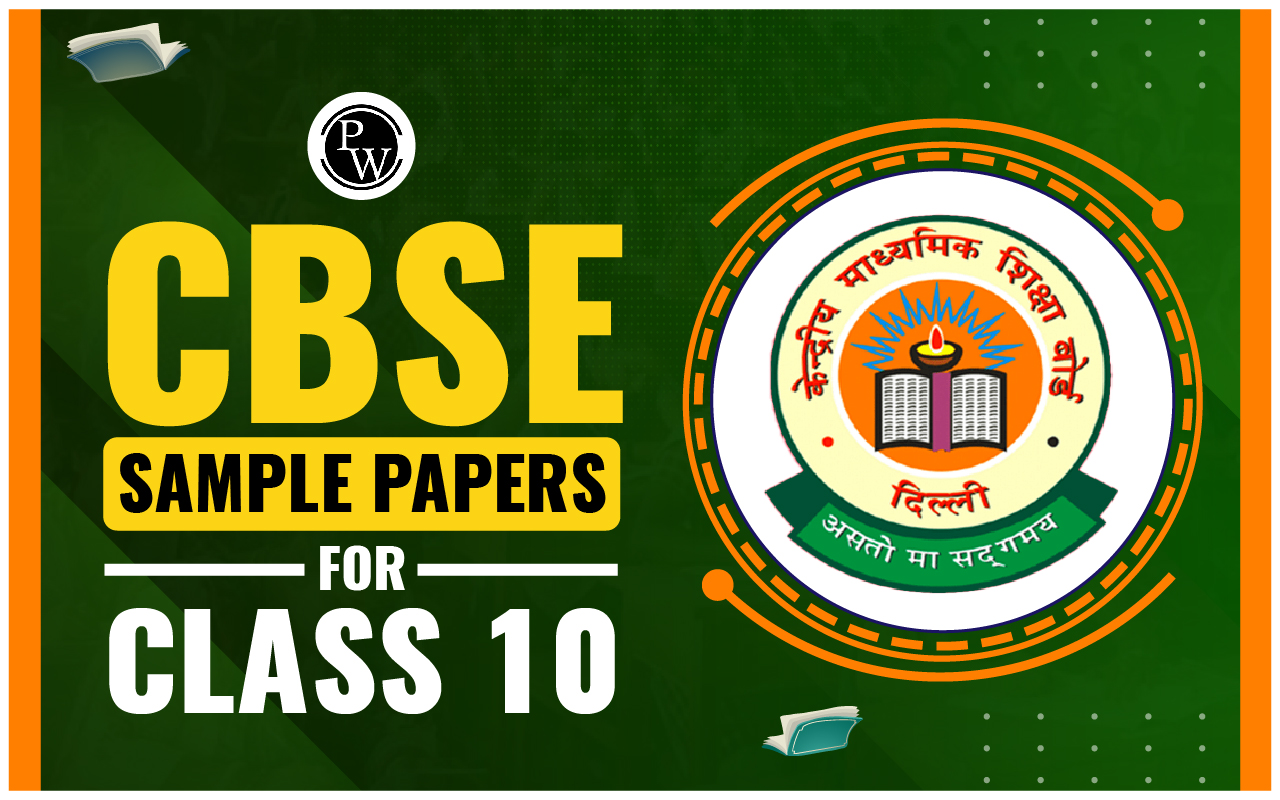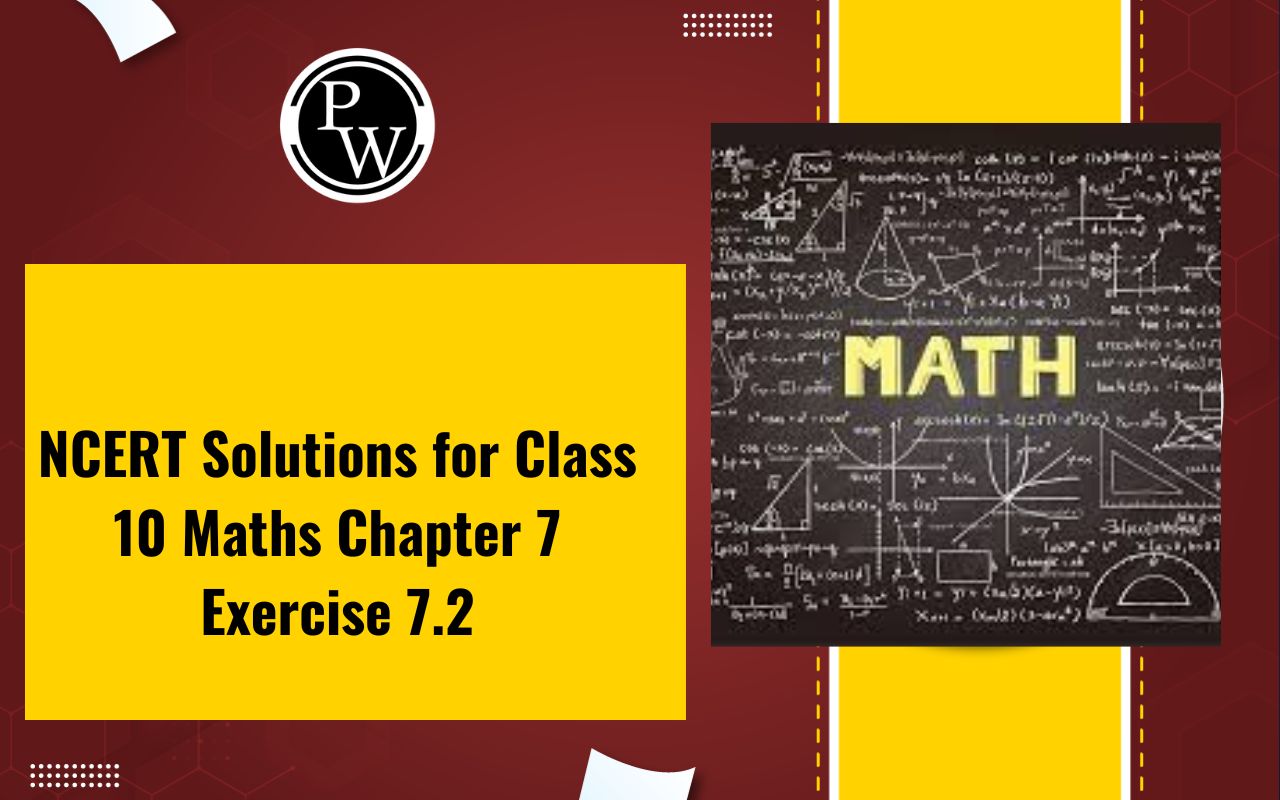
NCERT Solutions for Class 10 Maths Chapter 3 Exercise 3.7: Exercise 3.7 of Chapter 3 Pair of Linear Equations in Two Variables introduces the concept of solving linear equations using the graphical method.
In this exercise, students learn how to represent linear equations graphically and find the point of intersection, which represents the solution to the system of equations. The NCERT Solutions for this exercise provide clear, step-by-step guidance on plotting graphs, interpreting them, and understanding the relationship between the two equations. This method helps build a visual understanding of the solutions, making it easier for students to grasp the concept of linear equations.Important Questions For Class 10 Maths Chapter 3
NCERT Solutions for Class 10 Maths Chapter 3 Exercise 3.7 Overview
Exercise 3.7 of Chapter 3, Pair of Linear Equations in Two Variables focuses on solving linear equations using the graphical method . In this exercise, students are required to graph two linear equations on the same coordinate plane and find the point of intersection. The point where the two lines intersect represents the solution to the system of equations, as it satisfies both equations simultaneously.Graphical Representation :
- The exercise involves plotting each linear equation as a straight line on the graph using the equation’s slope and y-intercept.
Intersection Point :
- The point where the two lines intersect represents the solution to the system of equations.
- If the lines are parallel, the system has no solution (inconsistent system).
- If the lines coincide (overlap), the system has infinitely many solutions (dependent system).
- If the lines intersect at a single point, the system has a unique solution (independent system).
Steps for Graphing :
- Rewrite each equation in the slope-intercept form if necessary.
- Plot the points for both equations on a coordinate plane.
- Draw the lines and determine the point of intersection.
CBSE Class 10 Maths Sample Paper 2024-25
NCERT Solutions for Class 10 Maths Chapter 3 Exercise 3.7 PDF
Exercise 3.7 of Chapter 3, Pair of Linear Equations in Two Variables, focuses on solving linear equations using the graphical method. The NCERT Solutions PDF for this exercise provide clear, step-by-step solutions, guiding students through the process of graphing the equations and interpreting their intersections. For detailed explanations and practice the complete PDF with all the solutions for Exercise 3.7 is available below.NCERT Solutions for Class 10 Maths Chapter 3 Exercise 3.7 PDF
NCERT Class 10 Maths Chapter 3 Pair of Linear Equations in Two Variables Exercise 3.7
Here is the NCERT Class 10 Chapter 3 Pair of Linear Equations in Two Variables Exercise 3.7-1. The ages of two friends Ani and Biju differ by 3 years. Ani’s father Dharam is twice as old as Ani and Biju is twice as old as his sister Cathy. The ages of Cathy and Dharam differ by 30 years. Find the ages of Ani and Biju.
Solution:
The age difference between Ani and Biju is 3 yrs. Either Biju is 3 years older than Ani or Ani is 3 years older than Biju. From both cases, we find out that Ani’s father’s age is 30 yrs more than that of Cathy’s age. Let the ages of Ani and Biju be A and B, respectively. Therefore, the age of Dharam = 2 x A = 2A yrs. And the age of Biju’s sister Cathy is B/2 yrs. By using the information that is given, Case (i) When Ani is older than Biju by 3 yrs, then A – B = 3 …..(1) 2A − B/2 = 30 4A – B = 60 ….(2) By subtracting the equation (1) from (2), we get; 3A = 60 – 3 = 57 A = 57/3 = 19 Therefore, the age of Ani = 19 yrs And the age of Biju is 19 – 3 = 16 yrs. Case (ii) When Biju is older than Ani, B – A = 3 ….(1) 2A − B/2 = 30 4A – B = 60 ….(2) Adding the equations (1) and (2), we get; 3A = 63 A = 21 Therefore, the age of Ani is 21 yrs And the age of Biju is 21 + 3 = 24 yrs.2. One says, “Give me a hundred, friend! I shall then become twice as rich as you”. The other replies, “If you give me ten, I shall be six times as rich as you”. Tell me what is the amount of their (respective) capital? [From the Bijaganita of Bhaskara II] [Hint : x + 100 = 2(y – 100), y + 10 = 6(x – 10)].
Solution:
Let the capital amount with two friends be Rs. x and Rs. y, respectively. As per the given, x + 100 = 2(y − 100)…..(i) And 6(x − 10) = (y + 10)….(ii) Consider the equation (i), x + 100 = 2(y − 100) x + 100 = 2y − 200 x − 2y = −300…..(iii) From equation (ii), 6x − 60 = y + 10 6x − y = 70…..(iv) (iv) × 2 – (iii) 12x – 2y – (x – 2y) = 140 – (-300) 11x = 440 x = 40 Substituting x = 40 in equation (iii), we get; 40 – 2y = -300 2y = 340 y = 170 Therefore, the two friends had Rs. 40 and Rs. 170 with them.3. A train covered a certain distance at a uniform speed. If the train would have been 10 km/h faster, it would have taken 2 hours less than the scheduled time. And, if the train were slower by 10 km/h; it would have taken 3 hours more than the scheduled time. Find the distance covered by the train.
Solution:
Let the speed of the train be x km/hr and the time taken by the train to travel a distance be t hours, and the d km be the distance. Speed of the train = Distance travelled by train / Time taken to travel that distance x = d/t d = xt …..(i) Case 1: When the speed of the train would have been 10 km/h faster, it would have taken 2 hours less than the scheduled time. (x + 10) = d/(t – 2) (x + 10)(t – 2) = d xt + 10t – 2x – 20 = d d + 10t – 2x = 20 + d [From (i)] 10t – 2x = 20…..(ii) Case 2: When the train was slower by 10 km/h, it would have taken 3 hours more than the scheduled time. So, (x – 10) = d/(t + 3) (x – 10)(t + 3) = d xt – 10t + 3x – 30 = d d – 10t + 3x = 30 + d [From (i)] -10t + 3x = 30…..(iii) Adding (ii) and (iii), we get; x = 50 Thus, the speed of the train is 50 km/h. Substituting x = 50 in equation (ii), we get; 10t – 100 = 20 10t = 120 t = 12 hours Distance travelled by train, d = xt = 50 x 12 = 600 km Hence, the distance covered by the train is 600 km.4. The students of a class are made to stand in rows. If 3 students are extra in a row, there would be 1 row less. If 3 students are less in a row, there would be 2 rows more. Find the number of students in the class.
Solution:
Let x be the number of rows and y be the number of students in a row. Total students in the class = Number of rows × Number of students in a row = xy Case 1: Total number of students = (x − 1) (y + 3) xy = (x − 1) (y + 3) xy = xy − y + 3x − 3 3x − y − 3 = 0 3x − y = 3…..(i) Case 2: Total number of students = (x + 2) (y − 3) xy = xy + 2y − 3x − 6 3x − 2y = −6…..(ii) Subtracting equation (ii) from (i), we get; (3x − y) − (3x − 2y) = 3 − (−6) − y + 2y = 9 y = 9 Substituting y = 9 in equation (i), we get; 3x − 9 = 3 3x = 12 x = 4 Therefore, the total number of students in a class = xy = 4 × 9 = 365. In a ∆ABC, ∠ C = 3 ∠ B = 2 (∠ A + ∠ B). Find the three angles.
Solution:
Given, ∠C = 3 ∠B = 2(∠B + ∠A) 3∠B = 2 ∠A + 2 ∠B ∠B = 2 ∠A 2∠A – ∠B= 0- – – – – – – – – – – – (i) We know that the sum of a triangle’s interior angles is 180°. Thus, ∠ A +∠B + ∠C = 180° ∠A + ∠B +3 ∠B = 180° ∠A + 4 ∠B = 180°– – – – – – – – – – – – – – -(ii) Multiplying equation (i) by 4, we get; 8 ∠A – 4 ∠B = 0- – – – – – – – – – – – (iii) Adding equations (iii) and (ii), we get; 9 ∠A = 180° ∠A = 20° Using this in equation (ii), we get; 20° + 4∠B = 180° ∠B = 40° And ∠C = 3∠B = 3 x 40 = 120° Therefore, ∠A = 20°, ∠B = 40°, and ∠C = 120°.6. Draw the graphs of the equations 5x – y = 5 and 3x – y = 3. Determine the co-ordinates of the vertices of the triangle formed by these lines and the y axis.
Solutions:
Given, 5x – y = 5 ⇒ y = 5x – 5 Its solution table will be. Also given,3x – y = 3
y = 3x – 3
Also given,3x – y = 3
y = 3x – 3
 The graphical representation of these lines will be as follows:
The graphical representation of these lines will be as follows:
 From the above graph, we can see that the coordinates of the vertices of the triangle formed by the lines and the y-axis are (1, 0), (0, -5) and (0, -3).
From the above graph, we can see that the coordinates of the vertices of the triangle formed by the lines and the y-axis are (1, 0), (0, -5) and (0, -3).
7. Solve the following pair of linear equations:
(i) px + qy = p – q qx – py = p + q (ii) ax + by = c bx + ay = 1 + c (iii) x/a – y/b = 0 ax + by = a 2 + b 2 (iv) (a – b)x + (a + b) y = a 2 – 2ab – b 2 (a + b)(x + y) = a 2 + b 2 (v) 152x – 378y = – 74 –378x + 152y = – 604Solutions:
(i) px + qy = p – q……………(i) qx – py = p + q……………….(ii) Multiplying equation (i) by p and equation (ii) by q, we get; p 2 x + pqy = p 2 − pq ………… (iii) q 2 x − pqy = pq + q 2 ………… (iv) Adding equations (iii) and (iv), we get; p 2 x + q 2 x = p 2 + q 2 (p 2 + q 2 ) x = p 2 + q 2 x = (p 2 + q 2 )/ (p 2 + q 2 ) = 1 Substituting x = 1 in equation (i), we have; p(1) + qy = p – q qy = p – q – p qy = -q y = -1 (ii) ax + by= c…………………(i) bx + ay = 1+ c………… ..(ii) Multiplying equation (i) by a and equation (ii) by b, we get; a 2 x + aby = ac ………………… (iii) b 2 x + aby = b + bc…………… (iv) Subtracting equation (iv) from equation (iii), (a 2 – b 2 ) x = ac − bc– b x = (ac − bc – b)/ (a 2 – b 2 ) x = c(a – b) – b / (a 2 – b 2 ) From equation (i), we obtain ax + by = c a{c(a − b) − b)/ (a 2 – b 2 )} + by = c {[ac(a−b)−ab]/ (a 2 – b 2 )} + by = c by = c – {[ac(a − b) − ab]/(a 2 – b 2 )} by = (a 2 c – b 2 c – a 2 c + abc + ab)/ (a 2 – b 2 ) by = [abc – b 2 c + ab]/ (a 2 – b 2 ) by = b(ac – bc + a)/(a 2 – b 2 ) y = [c(a – b) + a]/(a 2 – b 2 ) (iii) x/a – y/b = 0 ax + by = a 2 + b 2 x/a – y/b = 0 ⇒ bx − ay = 0 ……. (i) And ax + by = a 2 + b 2 …….. (ii) Multiplying equations (i) and (ii) by b and a, respectively, we get; b 2 x − aby = 0 …………… (iii) a 2 x + aby = a 3 + ab 2 …… (iv) Adding equations (iii) and (iv), we get; b 2 x + a 2 x = a 3 + ab 2 x(b 2 + a 2 ) = a(a 2 + b 2 ) ⇒ x = a Substituting x = 1 in equation (i), we get; b(a) − ay = 0 ab − ay = 0 ay = ab ⇒ y = b (iv) (a – b)x + (a + b) y = a 2 – 2ab – b 2 (a + b)(x + y) = a 2 + b 2 (a + b) y + (a – b) x = a 2 − 2ab − b 2 …………… (i) (x + y)(a + b) = a 2 + b 2 (a + b) y + (a + b) x = a 2 + b 2 ………………… (ii) Subtracting equation (ii) from equation (i), we get; (a − b) x − (a + b) x = (a 2 − 2ab − b 2 ) − (a 2 + b 2 ) x(a − b − a − b) = − 2ab − 2b 2 − 2bx = − 2b (a + b) x = a + b Substituting x = a + b in equation (i), we get; y (a + b) + (a + b)(a − b) = a 2 − 2ab – b 2 a 2 − b 2 + y(a + b) = a 2 − 2ab – b 2 (a + b)y = −2ab y = -2ab/(a + b) (v) 152x – 378y = – 74 –378x + 152y = – 604 152x – 378y = – 74 ….(i) –378x + 152y = – 604….(ii) From equation (i), 152x + 74 = 378y y = (152x + 74)/378 Or y = (76x + 37)/189…..(iii) Substituting the value of y in equation (ii), we get; -378x + 152[(76x + 37)/189] = -604 (-378x)189 + [152(76x) + 152(37)] = (-604)(189) -71442x + 11552x + 5624 = -114156 -59890x = -114156 – 5624 = -119780 x = -119780/-59890 x = 2 Substituting x = 2 in equation (iii), we get; y = [76(2) + 37]/189 = (152 + 37)/189 = 189/189 = 1 Therefore, x = 2 and y = 18. ABCD is a cyclic quadrilateral (see Fig. 3.7). Find the angles of the cyclic quadrilateral.

Solution:
Given that ABCD is a cyclic quadrilateral. As we know, the opposite angles of a cyclic quadrilateral are supplementary. So, ∠A + ∠C = 180 4y + 20 + (-4x) = 180 -4x + 4y = 160 ⇒ -x + y = 40….(i) And ∠B + ∠D = 180 3y – 5 + (-7x + 5) = 180 ⇒ -7x + 3y = 180…..(ii) Equation (ii) – 3 × (i), -7x + 3y – (-3x + 3y) = 180 – 120 -4x = 60 x = -15 Substituting x = -15 in equation (i), we get; -(-15) + y = 40 y = 40 – 15 = 25 Therefore, x = -15 and y = 25.Benefits of Solving NCERT Solutions for Class 10 Maths Chapter 3 Exercise 3.7
- Improved Visual Understanding : Solving Exercise 3.7 helps students develop a clear visual understanding of linear equations by representing them graphically. This enhances their ability to interpret solutions in real-life contexts.
- Clarification of Graphical Method : The exercise focuses on the graphical method for solving linear equations, which is essential for students to understand how equations behave in a coordinate plane and how their solutions can be interpreted geometrically.
- Enhanced Problem-Solving Skills : By practicing the graphical method, students improve their ability to plot equations accurately and analyze the intersection points, which ultimately sharpens their problem-solving skills.
- Understanding Types of Solutions : The exercise helps students differentiate between consistent and inconsistent systems of equations by identifying the nature of the intersection whether the lines intersect at one point (unique solution), are parallel (no solution), or coincide (infinite solutions).
- Exam Preparation : Since graphical methods are an essential part of the syllabus, solving this exercise ensures students are well-prepared for board exams, where they may need to apply the graphical approach to solve linear equations.
- Strengthening Conceptual Knowledge : Practicing this exercise reinforces the concept of linear equations and their solutions, providing a strong foundation for more advanced topics in algebra and geometry.
- Building Confidence : As students become more comfortable with graphing equations and interpreting the results their confidence in tackling similar problems increases, making them better prepared for exams.
NCERT Solutions for Class 10 Maths Chapter 3 Exercise 3.7 FAQs
What is the focus of Exercise 3.7 in Chapter 3?
How do I plot the equations graphically?
Can I use graphical methods to solve the problems in this exercise?
Why is the graphical method important?
What does the intersection of the lines represent?


